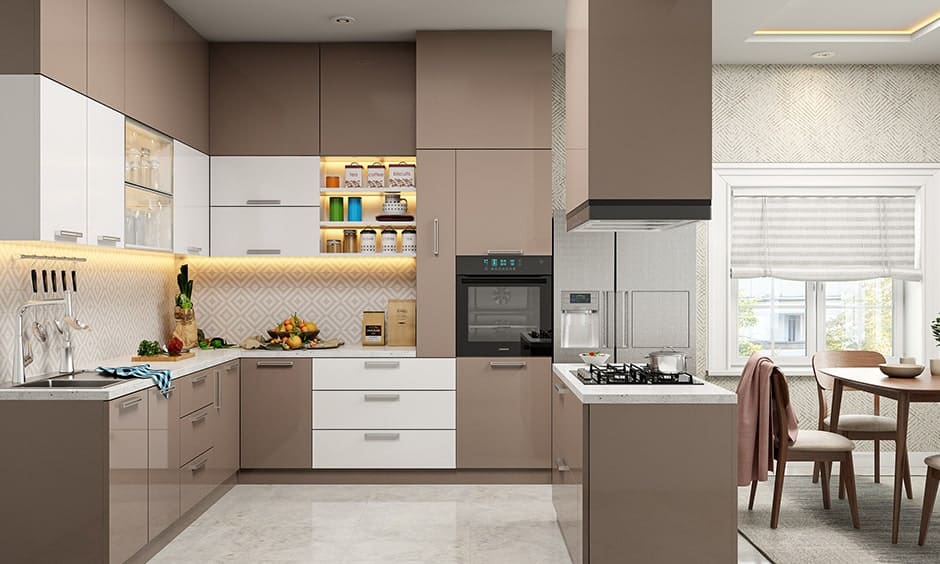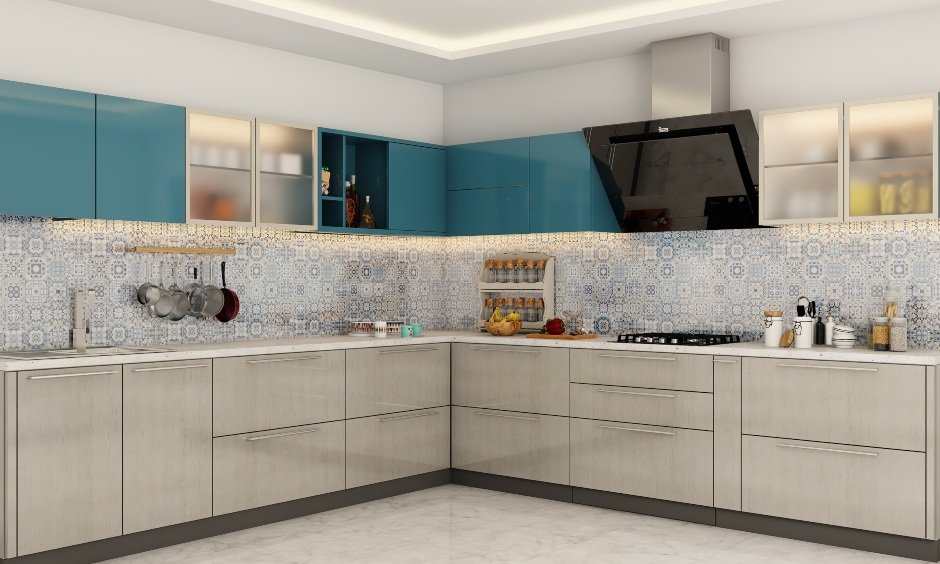Here’s our take on the standard dimensions to help you design your kitchen. Let’s get started with!
Over the last few years, kitchens have grown from carpenter made (or civil kitchens) with basic cabinetry and countertops to extraordinarily sleek and functional modular kitchen designs.
While modular kitchens are extremely functional and modern, if not designed and planned properly, can spoil your cooking experience. Right dimensions play an important role in designing a functional kitchen as they help you place every element in the correct place and direction.
While engineers have spent several years perfecting the right standard dimensions to design a kitchen our team of designers at DesignCafe have mastered the art of designing ergonomic kitchens with the right dimensions. A well designed kitchen with proper dimensions helps avoid unnatural postures and gives you a hassle-free cooking experience.
Today we bring you the right standard dimensions to design your kitchen. But before we get to that you must know about the golden triangle rule and how important it is to incorporate while designing your kitchen.
The Golden Triangle Rule
The golden triangle rule says that the preparation slab (sink), the storage unit (refrigerator), cooking range, (stove), must be installed within a gap of four-nine feet. The sink, stove, and refrigerator are the focal points of the kitchen and therefore need to be placed strategically. It is wise to place your stove and refrigerator opposite each other with the sink in the centre — forming a tentative triangle. Consider little details like putting your frequently used appliances closer to the refrigerator to make this golden triangle far more user-friendly. Do remember, segregate and bundle everything as per the functionality.
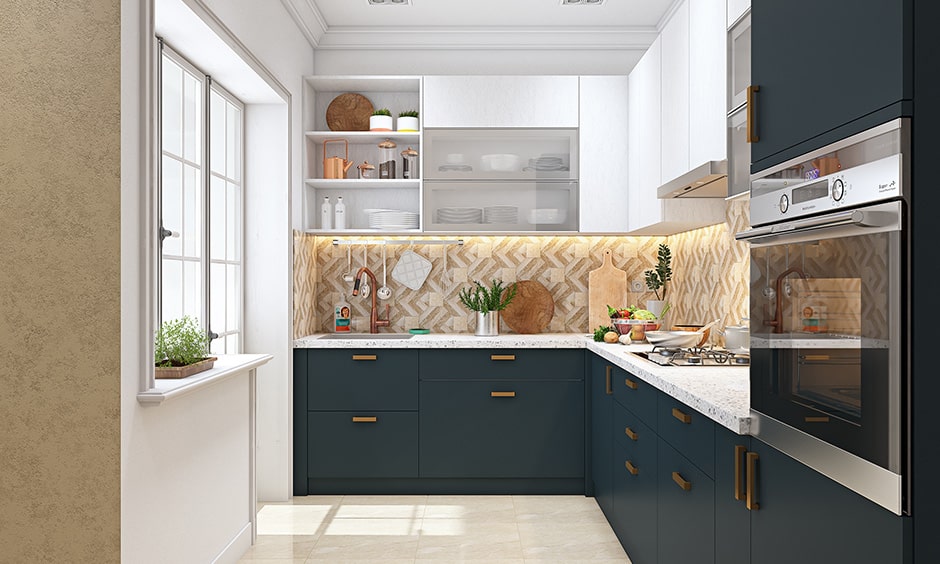
Dimensions For Countertop And Sink
Your kitchen countertop and sink are the busiest sections of any kitchen. This is where all the cooking and washing happens. Hence, it’s essential that both these elements are placed rightly. The height of your kitchen countertop can vary depending on the height of the person who will be using it. The thumb rule of designing Indian kitchens is that there should be a gap of four inches between your elbow and the countertop. The sink is approximately equal height as the countertop height for apparent reasons. The perfect depth of a sink is about 56 centimeters. The depth of the countertop and the lower cabinets should be two feet. It may vary depending on the size of the gas stove or other appliances that are installed over or around it.
Standard dimensions of countertop and sink are:
Height: 72 centimeters
Width: 60 – 90 – 100 – 120 centimeters
With A Depth: 56 centimeters
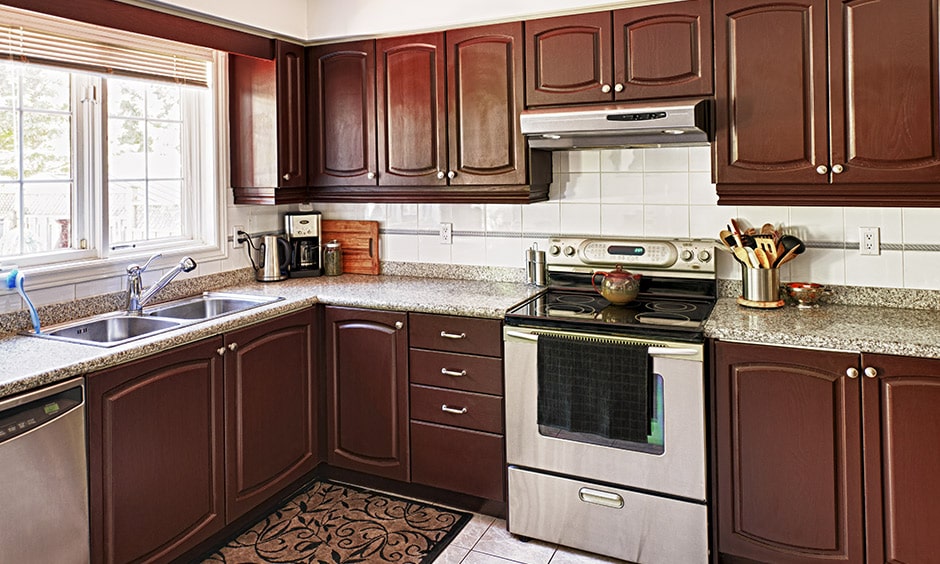
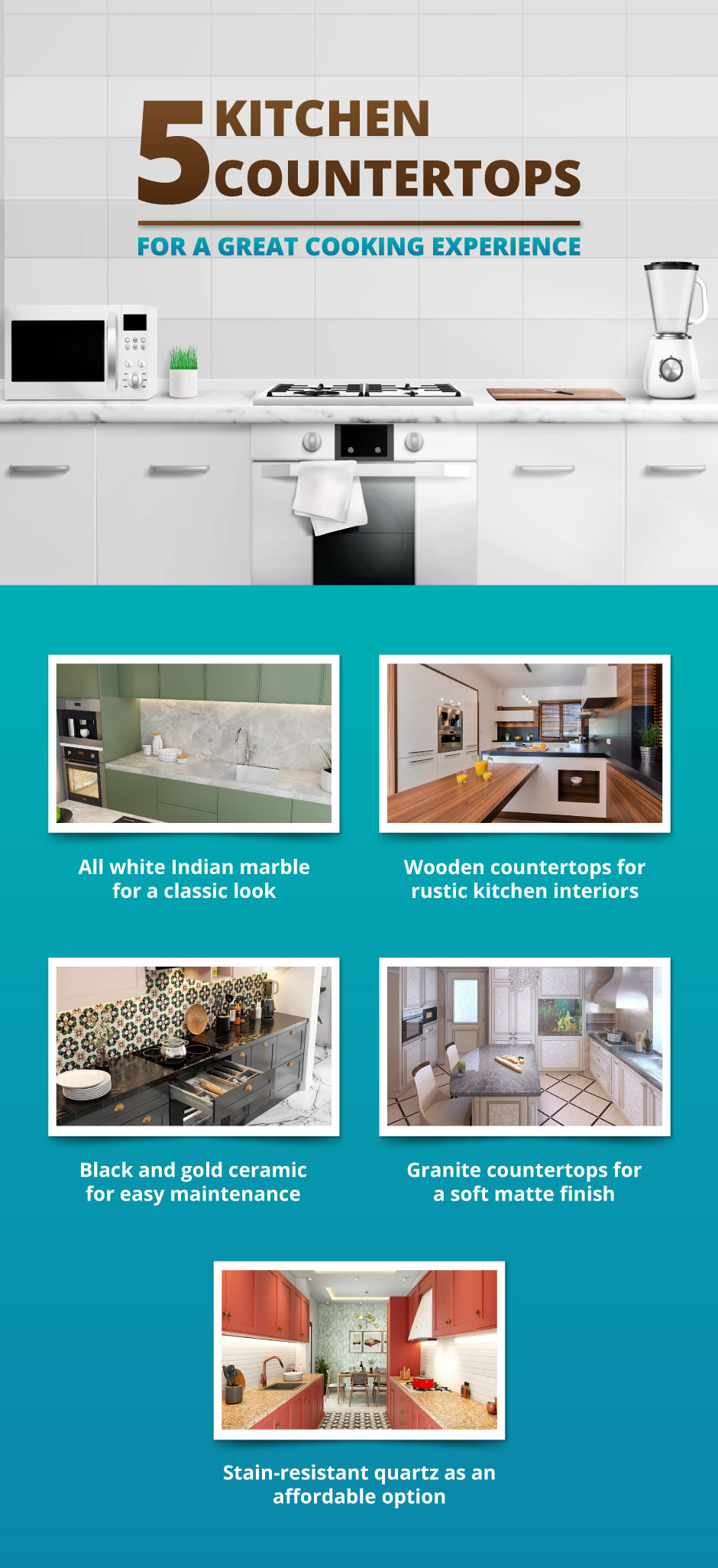
Dimensions For Wall Cabinets
Typically wall cabinets are installed according to the user’s height to avoid unnecessary bending and stretching to take out utensils while you are prepare food. Wall cabinets are usually used for everyday ingredients, appliances and dishes. Hence, the ideal depth for the wall cabinets is about 32 centimeters to ensure you don’t bump into shutters while you are cooking!
The standard dimensions for wall cabinets are:
Height: anywhere between 30 – 90 centimeters
Width: 40 – 90 centimeters
Depth of 32 centimeters
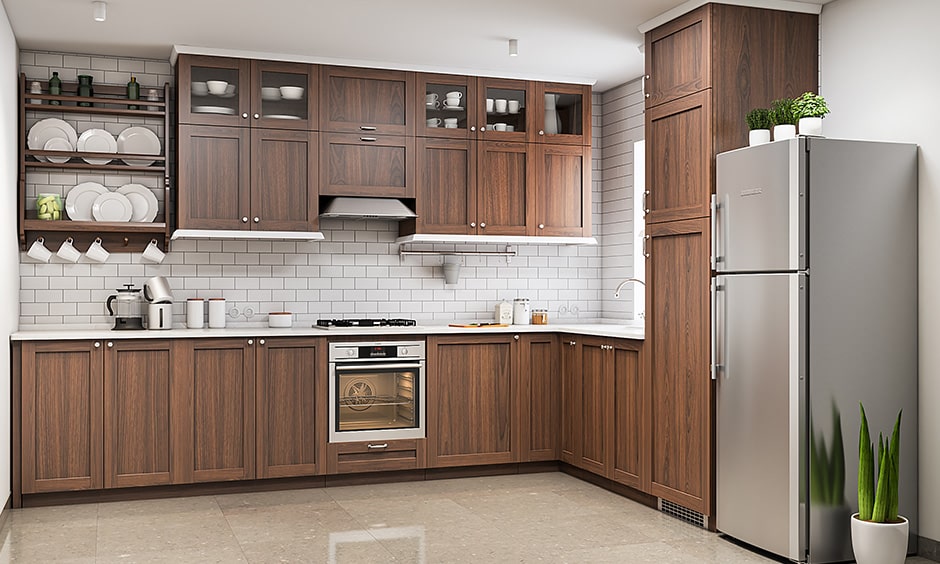
Dimensions For Base Cabinets
In modular kitchen designs, base cabinets are installed to store large containers and vessels. Contrary to its primary function storage, base cabinets additionally play a significant role in easy accessibility in your kitchen. Considering almost every member of the family uses base kitchen cabinets, its dimensions must be as follows:
Height: 36 – 85 centimeters
Width: 15 – 120 centimeters
Depth: 41 – 56 centimeters
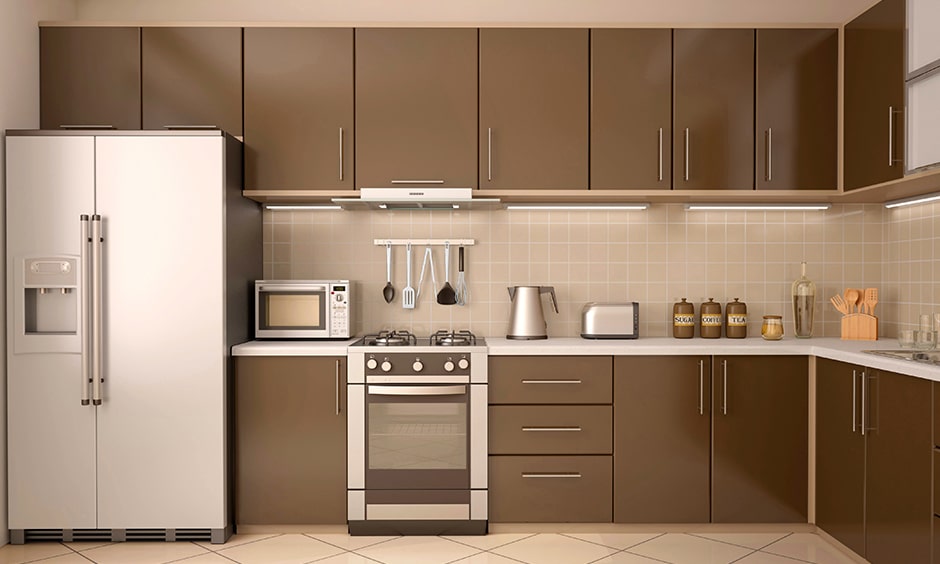
Premium Modular Kitchen Designs
Dimensions For Kitchen Island
A kitchen island is typically used as an extra workstation and adds to the functionality of the golden triangle in modern kitchens. It can also act as a casual breakfast counter while in certain cases it works as a storage and hob unit too. Before you design your modular kitchen, dig deep into the functions you want your kitchen island to focus on to increase the functionality of your cooking space. Kitchen islands do not have standard dimensions. It is not a one-size, fits in all feature. However, as a rule of thumb, a kitchen island must not use more than 10 percent of the overall space in your kitchen layout. This translates to a maximum breadth x length of 3.5 feet x 4 feet. An island larger than this will dominate your kitchen and make it challenging to move around freely.
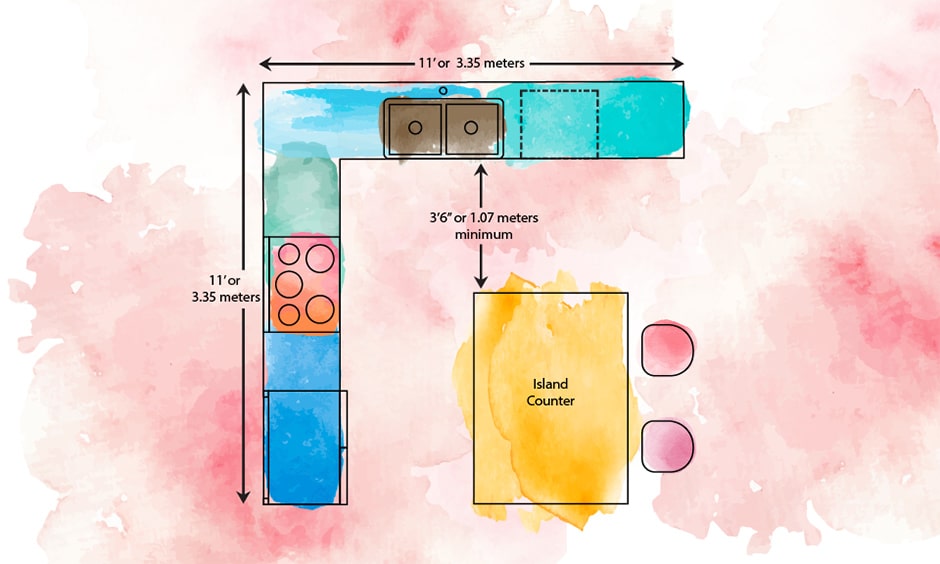
Dimensions For Backsplashes
Backsplashes have become a popular means to add aesthetics to modular kitchen designs. It is usually made of easy-to-clean materials as they are extremely prone to get dirty. A backsplash rests between the countertop and wall cabinets to protect your walls from getting dirty. The ideal height of a backsplash should be about 60 centimeters.
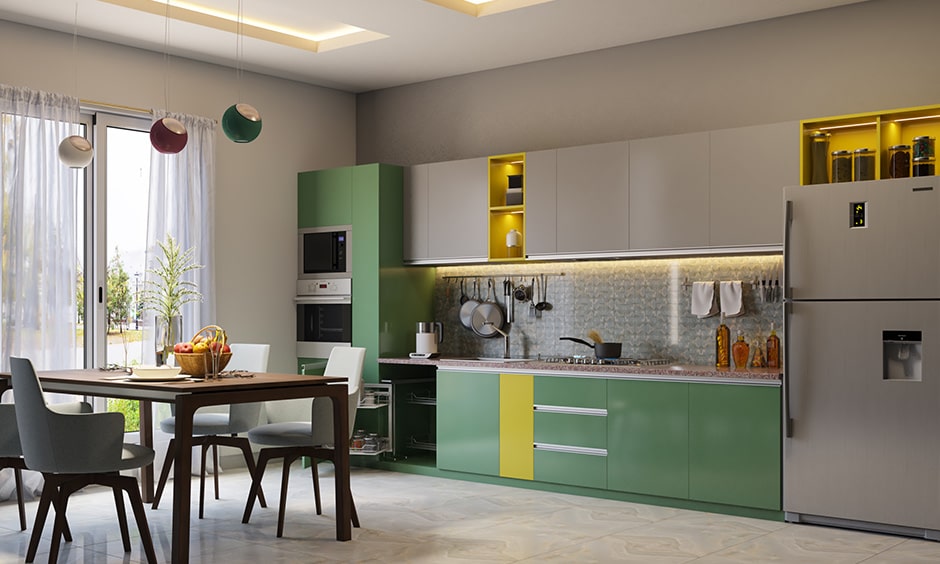
And it’s a wrap!
We hope these dimensions help you design a perfect kitchen for yourself.
Explore, More About
 Select Category
Select Category

